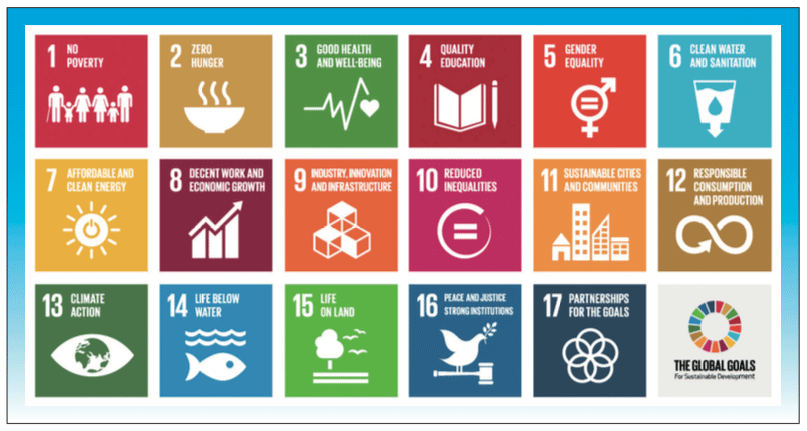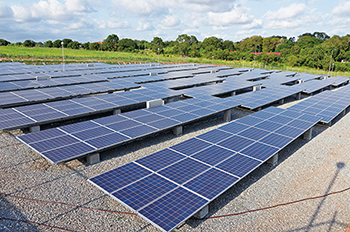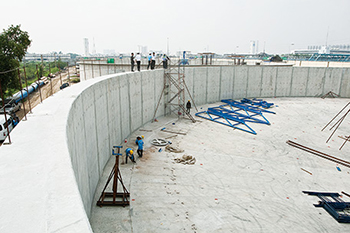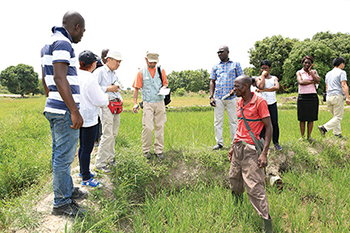Section 2 Overview and Significance of the 2030 Agenda for Sustainable Development
1. Overview of the 2030 Agenda for Sustainable Development
The 2030 Agenda for Sustainable Development (the 2030 Agenda) sets out ambitious global goals aimed at achieving sustainable development, determined to end poverty in all its forms everywhere, including eradicating extreme poverty by 2030.
Basic concept
At the outset, the 2030 Agenda lists “five Ps” that constitute the keywords of sustainable development: People; Planet; Prosperity; Peace; and Partnership. The Agenda states that the development goals pursued under it are based on a comprehensive and “people-centered” concept, and that it seeks to address the remaining challenges of the MDGs, which could not be achieved by 2015, as well as new challenges which are beyond the MDGs. In addition, the Agenda also presents the basic concepts that all countries including developing and developed countries need to commit to the achievement of the goals, and that “no one will be left behind” in the world.
Sustainable Development Goals (SDGs)
The 2030 Agenda identifies 17 Goals and 169 targets as comprising the SDGs. Compared to their predecessor, the MDGs, consisting of 8 Goals and 21 targets, the SDGs contain many more goals with broad and comprehensive content.
As demonstrated by the goals set out in Goals 1 to 6, the 17 Goals include goals that succeed and build on the goals of the MDGs, including poverty, hunger, nutrition, education, gender, and water and sanitation. For example, Goal 1 of the MDGs was to eradicate “extreme” poverty.(Note 1) Specifically, it set out a target to halve the proportion of people in “extreme” poverty by 2015 compared to the 1990 level. In contrast, the 2030 Agenda takes a step further, setting forth Goal 1 of the SDGs as eradicating poverty “in all its forms everywhere.” The Agenda gives the concrete targets of aiming to eradicate “extreme” poverty all over the world and to reduce at least by half the proportion of people living in “poverty in all its dimensions” according to national definitions by 2030.


A large-scale solar panel facility built with grant aid from Japan at the University of Ghana in Accra, Ghana. (Photo: Takeshi Kuno / JICA)
At the same time, various development issues have been newly added to the 2030 Agenda as SDGs, reflecting the increasing global recognition of the importance of sustainable, inclusive, and resilient growth. The goals set out in Goals 7 to 16, covering issues from economic growth and infrastructure, reduction of disparities, sustainable consumption and production, to climate action and the realization of peace, were not included in the MDGs in any clear form.
Means of implementation

The construction site of the Bangken Water Treatment Plant in the Bangkok Metropolitan Region, Thailand. (Photo: Shinichi Kuno / JICA)
The 2030 Agenda also defines the means of implementation (MOI) for achieving the SDGs. In this connection, it emphasizes especially the importance of meeting the SDGs under the Global Partnership framework which mobilizes resources that can be utilized by all actors, including governments, civil society, the private sector, and UN agencies. The 2030 Agenda mentions ODA numerical targets (e.g., 0.7% of ODA/GNI). It underscores the importance of ODA continuing to fulfill an essential role, including the role of catalyst for mobilizing private flows, as well as the importance of providing assistance for technology transfers and capacity building, as MOI of the 2030 Agenda.
Follow-up and review

Japanese experts providing support under the Local Rice Promotion Project in Bouaké, Côte d’Ivoire, observe rice paddies together with local people. (Photo: Masataka Otsuka / JICA)
The 2030 Agenda provides for the follow-up and review processes of the progress of achieving the SDGs. Specifically, it notes that the High-level Political Forum of the UN will meet every four years to follow up on and review the global implementation status of the 2030 Agenda, and that follow-ups and reviews would also be conducted at the national and regional levels. Indicators that will be used to measure the level of achievement of the SDGs in this process will be developed based on reviews conducted by a working group of the UN Statistical Commission.
- Note 1: At the time, the World Bank defined extreme poverty as living under $1.25 a day or in Japanese yen roughly ¥150 a day. (The World Bank defined it as living under $1.90 a day as of January, 2016.)
